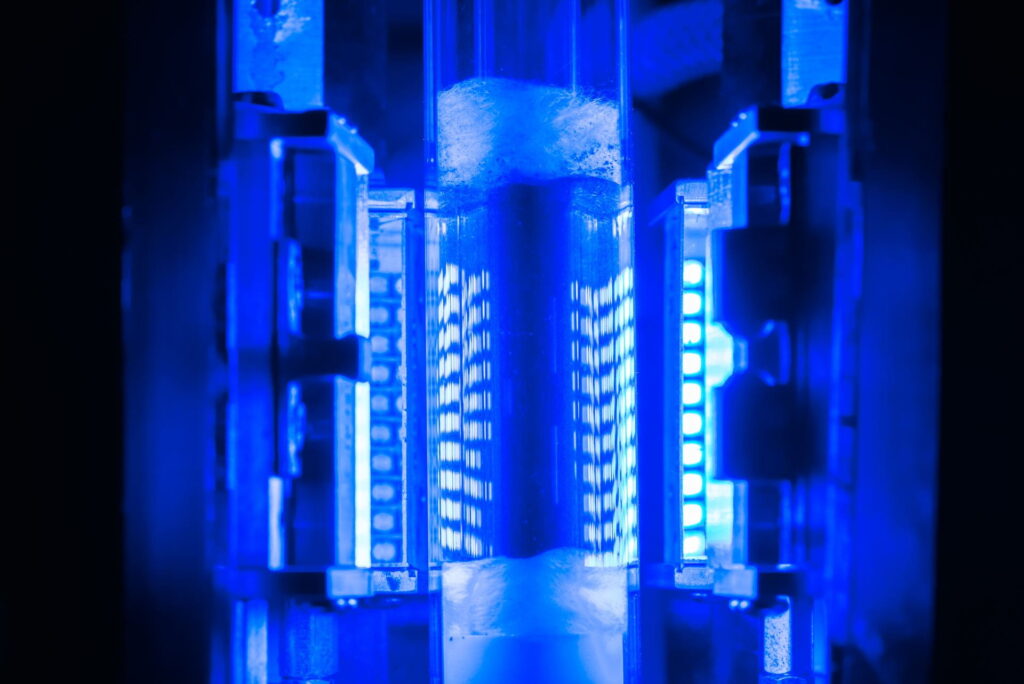New photocatalyst for ammonia decomposition unveiled
By Julian Atchison on December 07, 2022
Rice University & Syzygy Plasmonics

A team from Rice University in Texas has published research demonstrating a new copper-iron photocatalyst, which can successfully react with ammonia to produce hydrogen. Though copper-ruthenium is typically preferred as a thermocatalyst for ammonia decomposition, when illuminated with laser light, the copper-iron catalyst demonstrated efficiencies and reactivities comparable with those of copper-ruthenium. Syzygy Plasmonics was subsequently able to replicate the results at five hundred times the scale (grams of hydrogen), using LED lights.
Replacing rare, expensive materials like ruthenium with abundant, cost-effective metals like iron in ammonia cracking would be significant, and has been the focus of many other research groups (and AEA conference panel discussions!). The new catalyst breakthrough will be coupled with the patented, light-driven “antenna reactor” technology developed at Rice and licensed by Syzygy, as the latter pursues commercialisation (the first units are due to ship in 2023).
$76 million funding round
It’s been a big month for Syzygy, which recently closed a successful, $76 million Series C funding round. Led by Carbon Direct Capital, Aramco, Chevron, LOTTE and Toyota all participated via their venture subsidiaries. The financing is a “key milestone” in Syzygy’s broader goal of achieving 1 gigatonne of emissions reductions by 2040, via their all-electric chemical production processes.
Syzygy is hyper-focused on aligning energy, technology, and sustainability. The projects we are delivering are targeting zero-emissions hydrogen from green ammonia, low-emissions hydrogen from combustion-free steam methane reforming, and sustainable fuels made from carbon dioxide and methane. This technology is the future of chemical manufacturing.
Syzygy Plasmonics Co-founder & CTO Suman Khatiwada in his organisation’s official press release, 16 Nov 2022